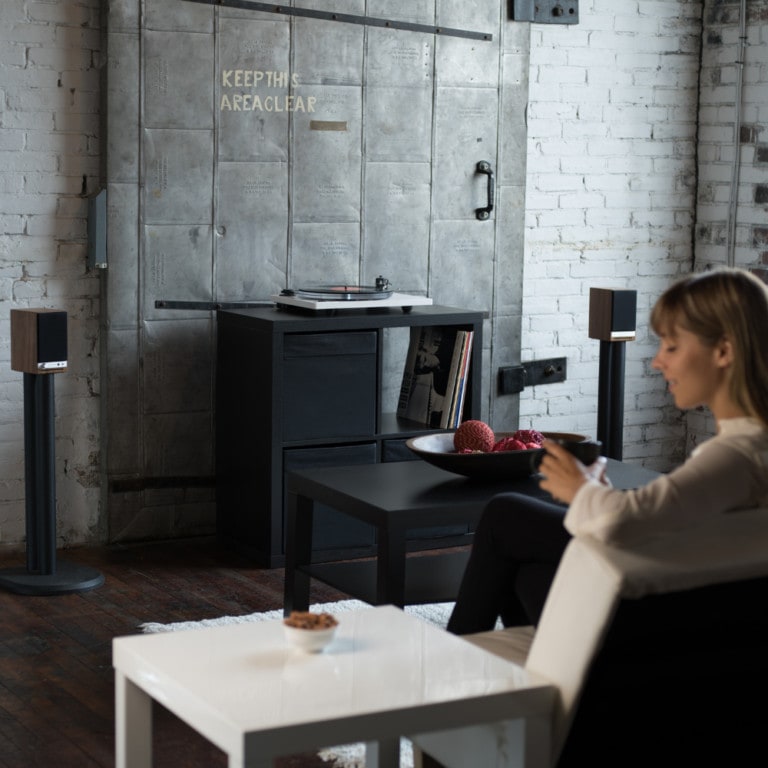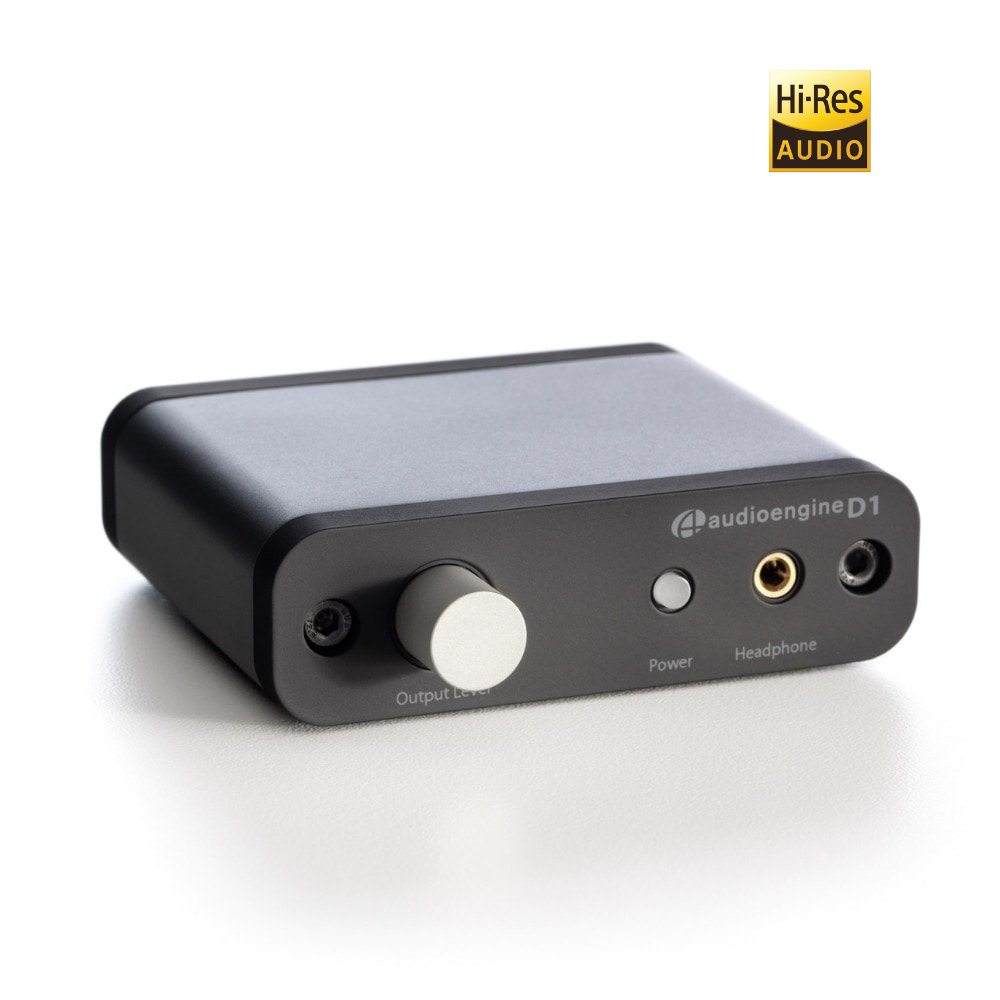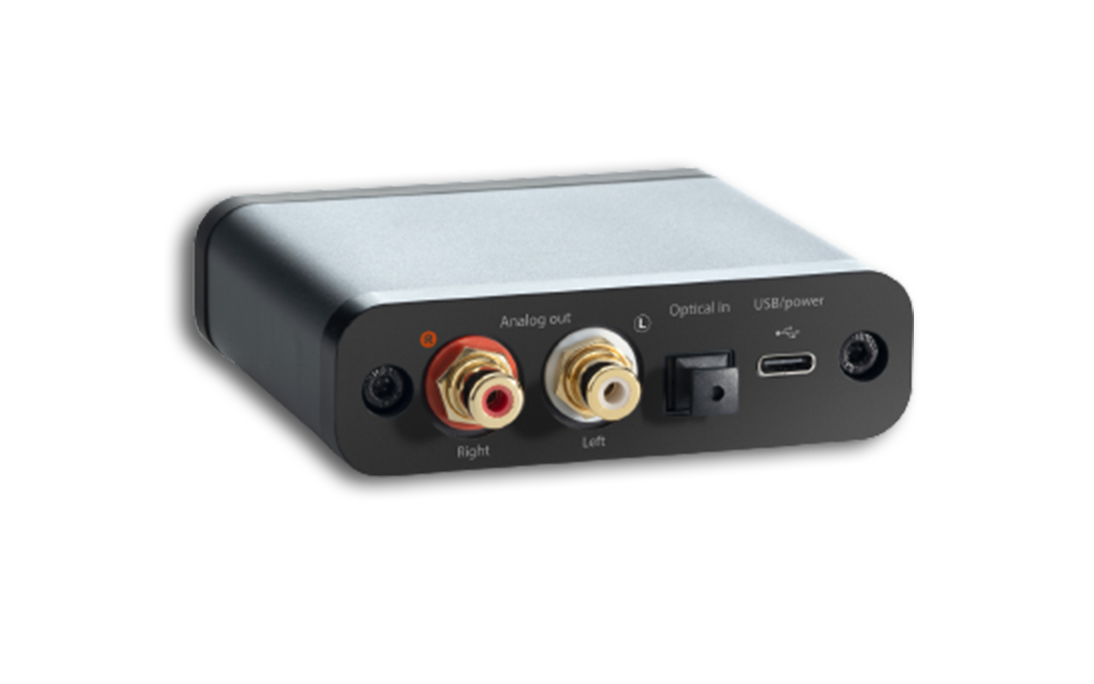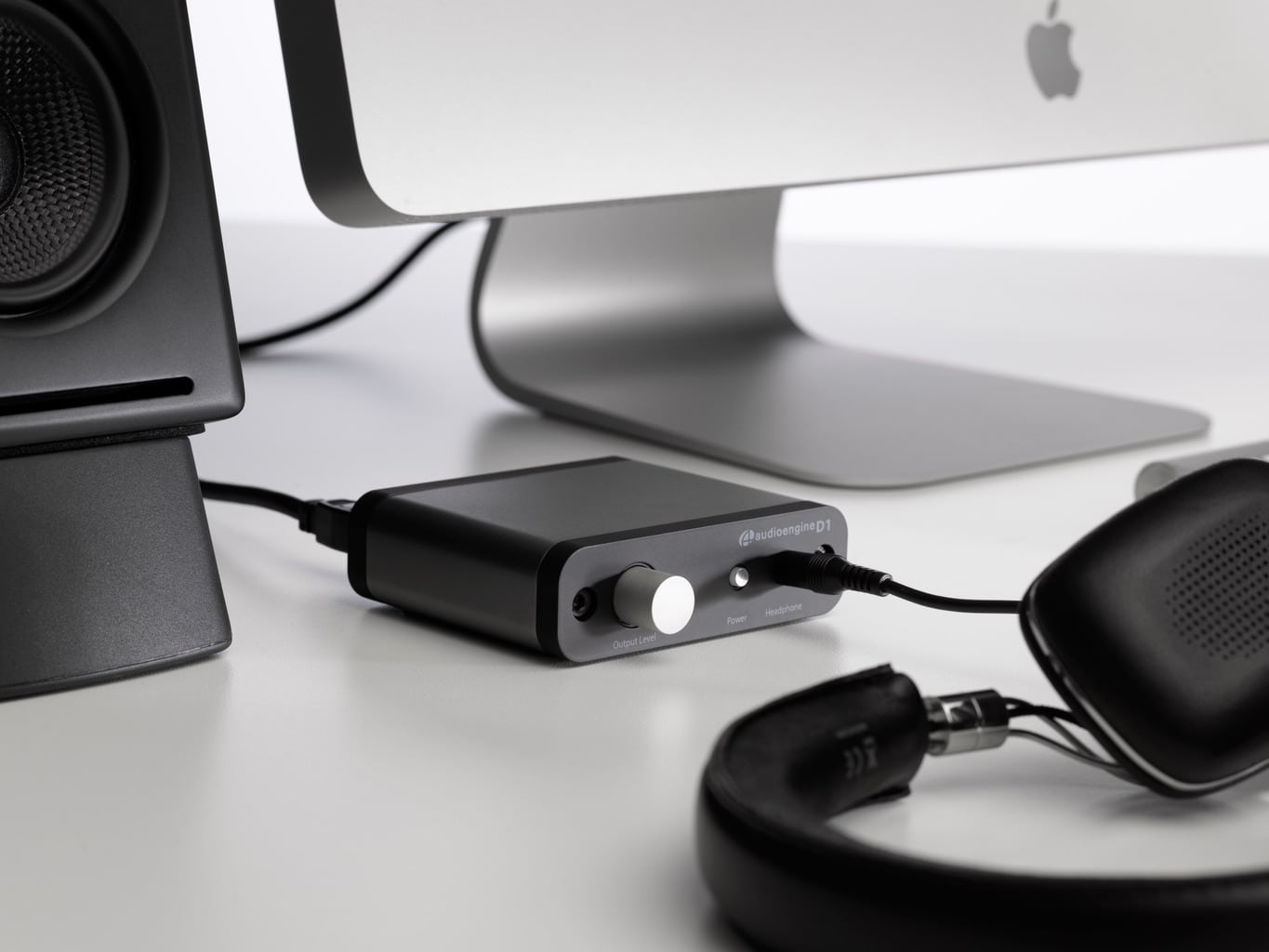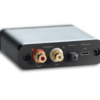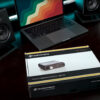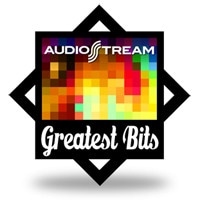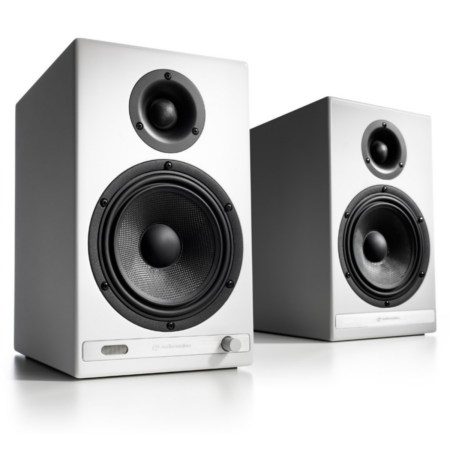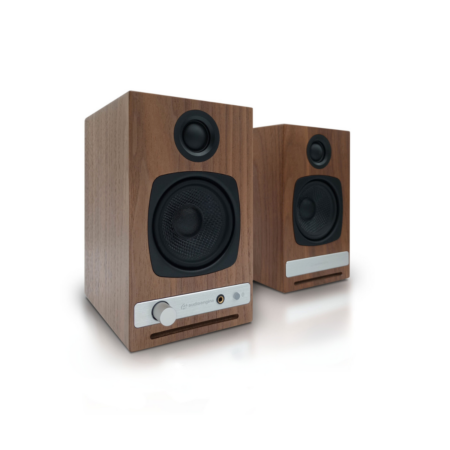D1 Desktop Headphone Amplifier and DAC
$169
Enter your postal code to estimate delivery time from Texas:




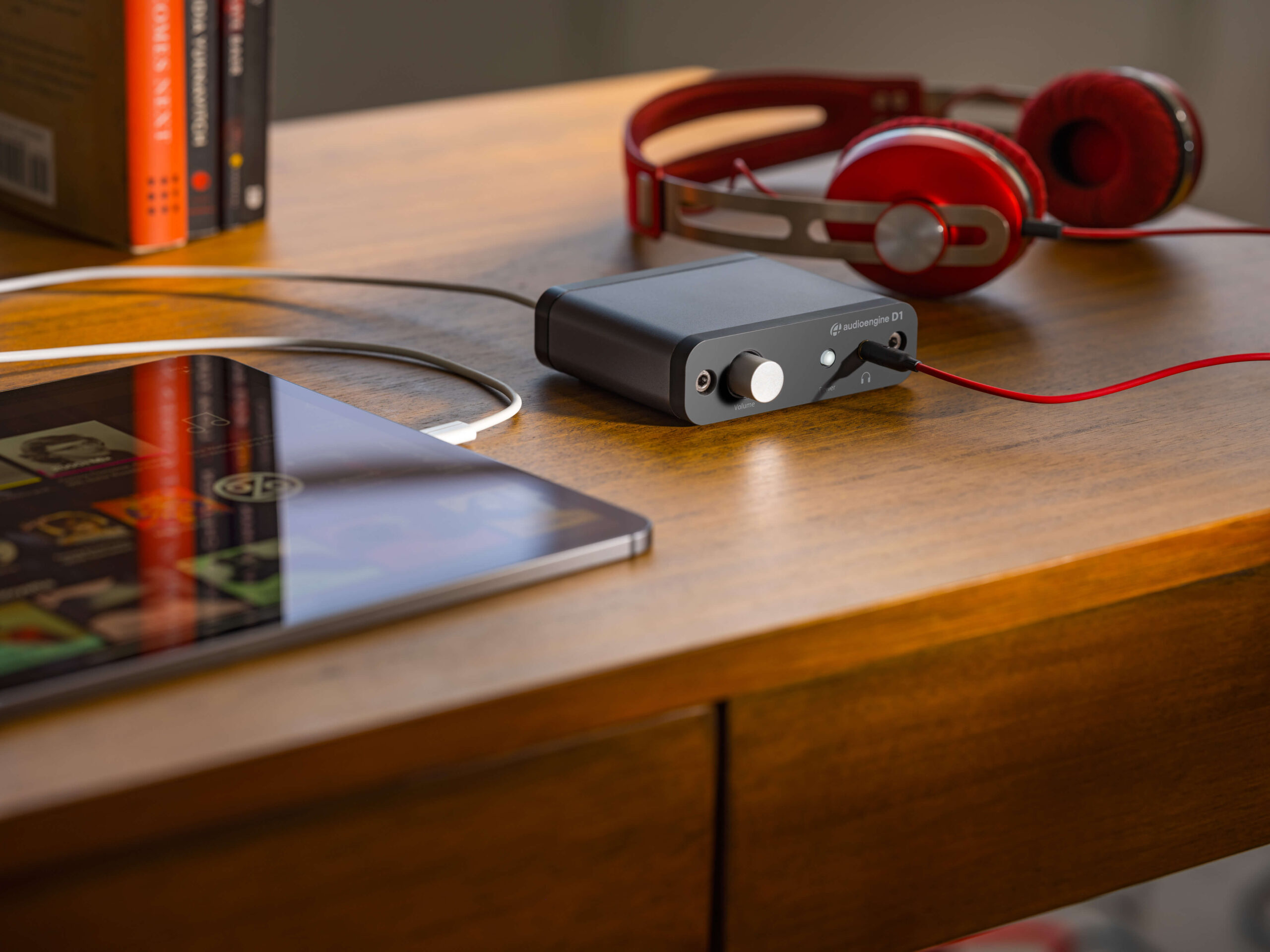
The D1: A Master of All Trades
- Universal Compatibility: Seamlessly connects to and is powered by desktop computers, laptops, and other USB-enabled devices.
- Versatile Connections: Offers USB C and optical inputs, making it compatible with a wide range of digital sources including PCs, TVs, and media players.
- Powered by Your Devices: Designed to draw power directly from your computer or any USB port, eliminating the need for external power sources and simplifying setup.

Features
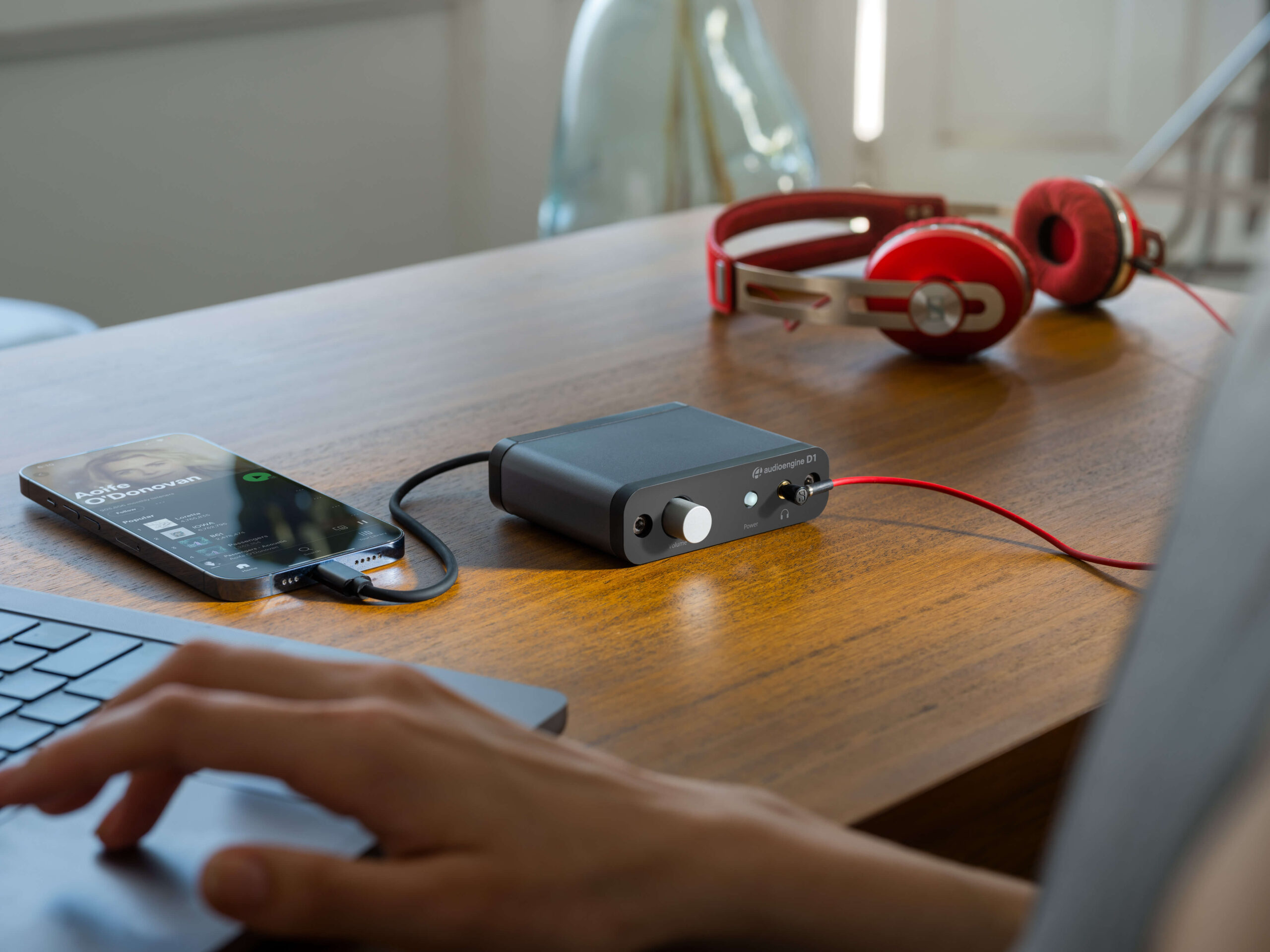
Designed for Audiophiles
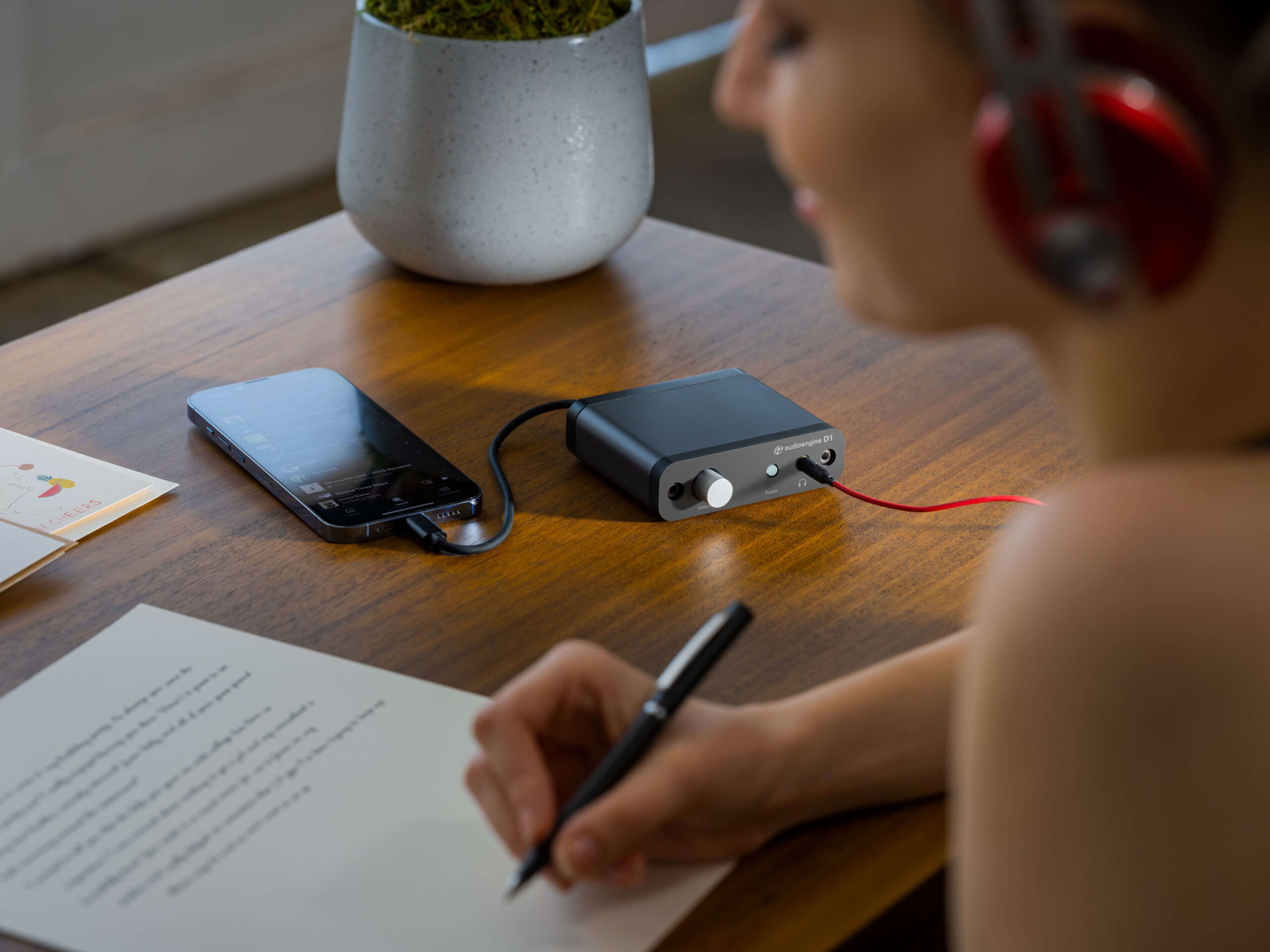
Setup That’s as Easy as 1-2
The D1 Desktop Headphone Amplifier and DAC offers a plug-and-play solution, requiring no special software, apps, or drivers. Its compatibility with any audio system or powered speakers, like the Audioengine A5+ or A2, along with power directly from the USB bus, facilitates an effortless enhancement of your desktop listening experience.
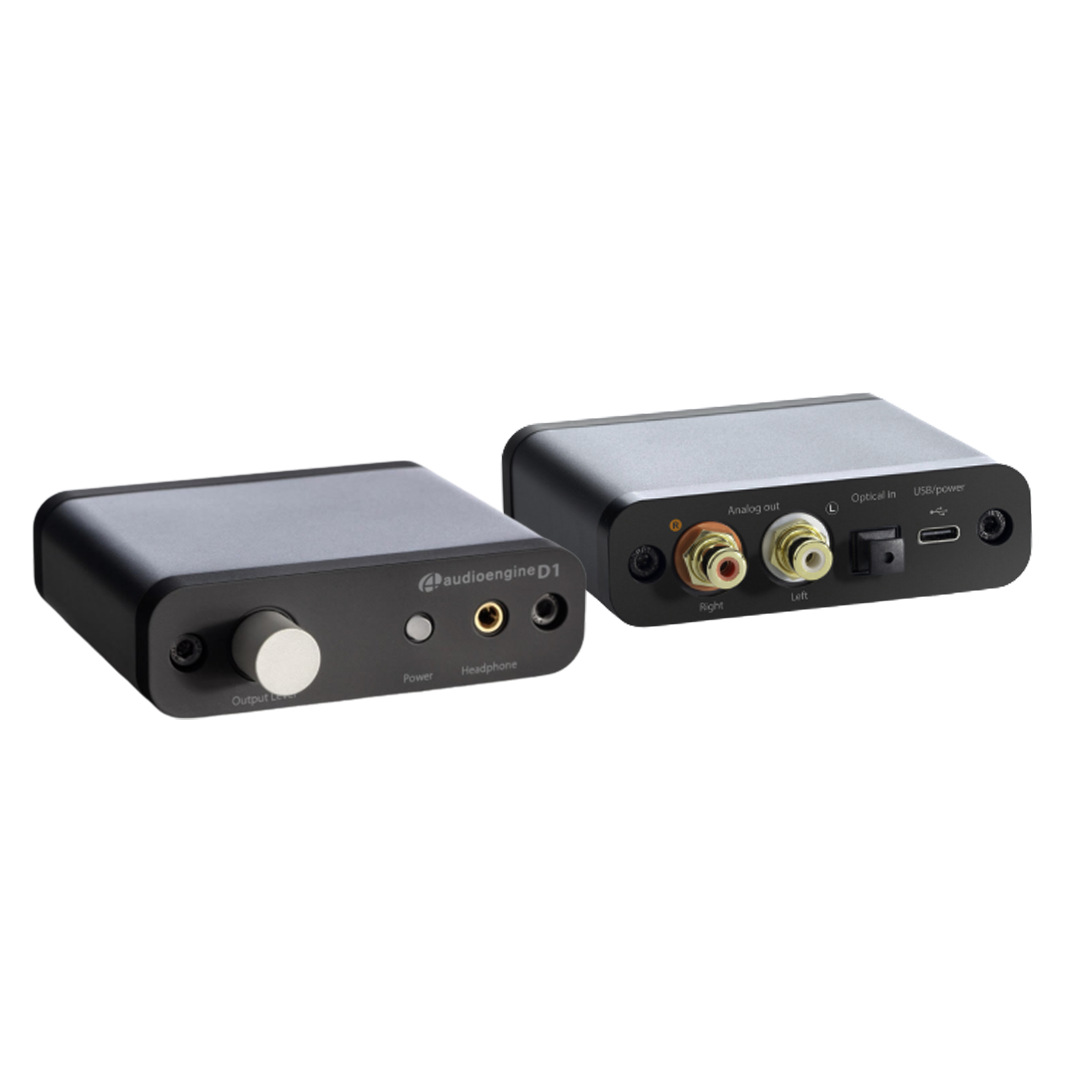
Tech Specs
What's in the box
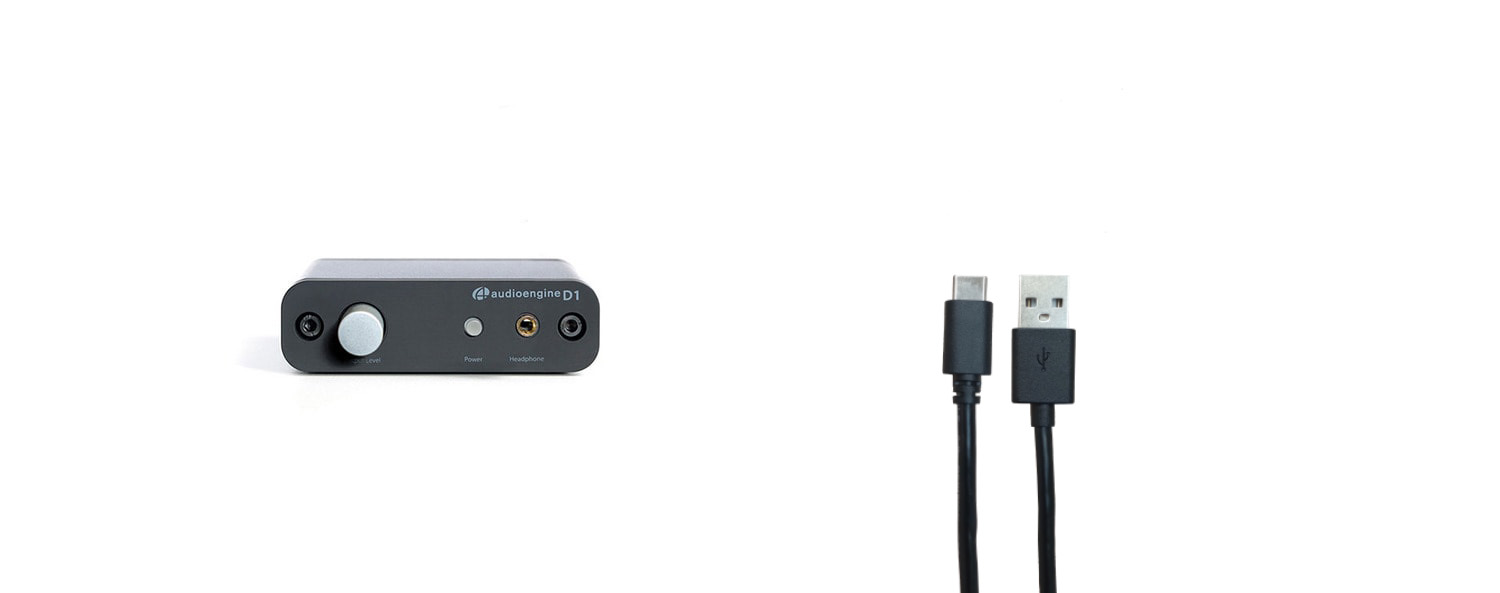
Questions & answers about the D1 Desktop Headphone Amplifier and DAC
The Gen 1 24-bit D1 requires a USB 2.0 cable to work properly. If your computer has USB-C inputs, use a 2.0 USB cable with a type C-to-A USB adapter.
All Optical audio is considered a "fixed" output, meaning volume will not attenuate from the TV remote. If you have an HD5/HD6 you can use the Audioengine remote for this. Fo
The D1 includes a headphone amplifier based on the ES9601C SABRE low noise opamp. This headphone amp is able to provide low-impedance, high-fidelity audio to a wide range of headphones. We've found the sweet spot for the D1 is headphones that measure between 20 and 300ohms. The resistance of a pair of headphones can tell you a little bit about how much power they need, though other variables do have an impact as well. We have heard from customers with headphones measuring as much as 600ohms who say they're happy with the output of the D1.
The D1 is essentially a very high-end external sound card. Its components and implementation of those components make it more capable than what might be built into a computer, not to mention the benefit of moving those sensitive components outside and away from the potentially noisy interior of your computer. All of this means the signal your speakers receive will be clearer, with a lower noise-floor, and with a more pronounced dynamic range over your internal sound card.
You should be able to incorporate the Airport Express with the D1 easily. All you would need to do is run an optical cable from the output of the Airport Express into the optical input of the D1. Then all you would need to do is connect the D1's RCA output into the analog input of your Audioengine Speakers or your AV receiver.
The D1 will work with any device that can operate as a USB host, can provide enough power via USB, and includes generic drivers for standard USB audio playback. A device with Android 5.0 or later should have both USB host mode and native plug-and-play functionality for USB audio, so you could connect the two together using a USB OTG cable along with a standard USB cable.
To get things up and running, you would just need to first connect the included USB cable from your computer's USB port to the D1; then you'll need to connect the RCA outputs to your powered speakers/ AV receiver or your headphones to the headphone output on the front of the D1.
Next, if using a Mac, you will need to go to System Preferences/Sound, and select "Audioengine D1"; if you're using a PC, no setting changes are needed as the computer will automatically find the USB driver. Finally, you'll just need to play music from iTunes or your favorite media player and that's it! Setup really is that easy!
Product Videos
Compare Us to the Competition

Fearless
Shopping
- Fast & free shipping
- We pay sales tax, if applicable
- 60-day audition & easy returns
- 3-year warranty & superior support
- Guaranteed smiles
Which Audioengine Headphone Amplifier & DAC is right for you?

- 10 ohms to 600 ohms
- Optical
- USB
- Desktop
- PCM
- DSD
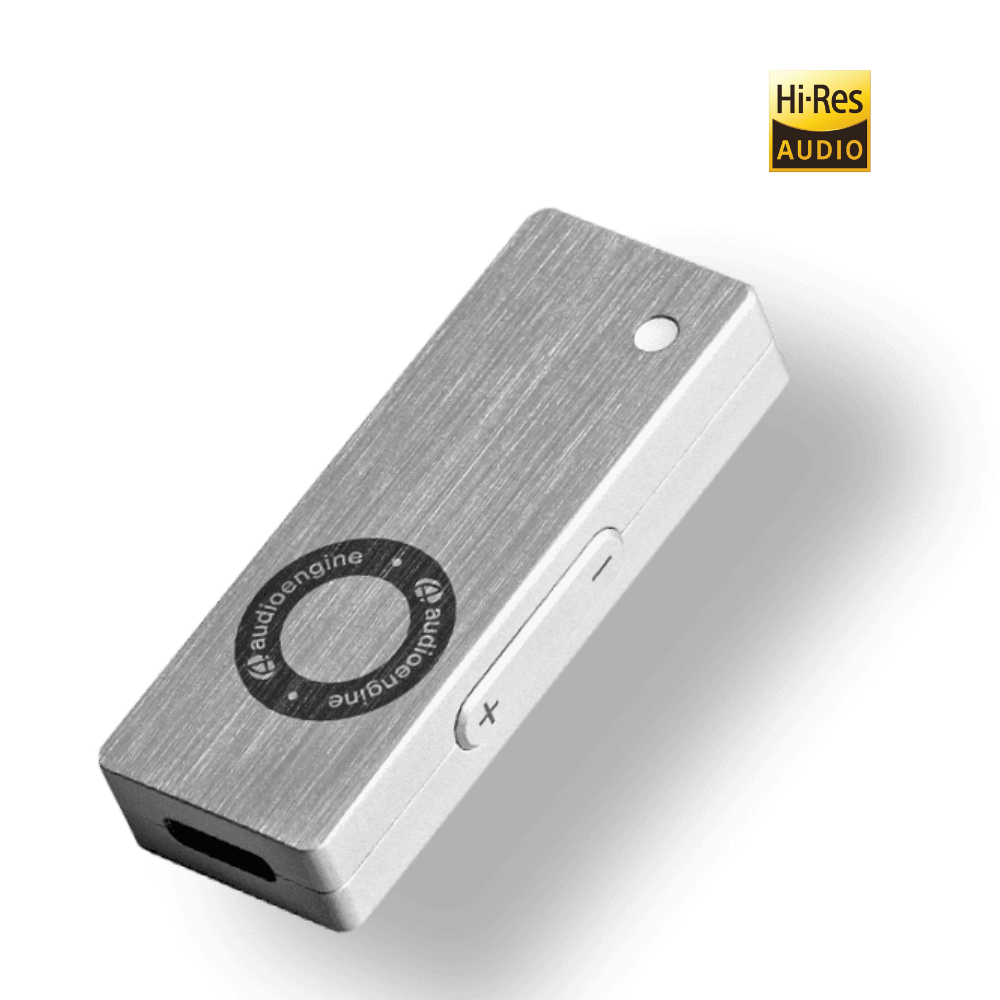
- 10 ohms to 600 ohms
- PCM
- DSD
- MQA

- 10 ohms to 600 ohms
- Portable
- PCM
- DSD
- MQA

We’ve Got Sound Advice for Everyone on Your Gift List
